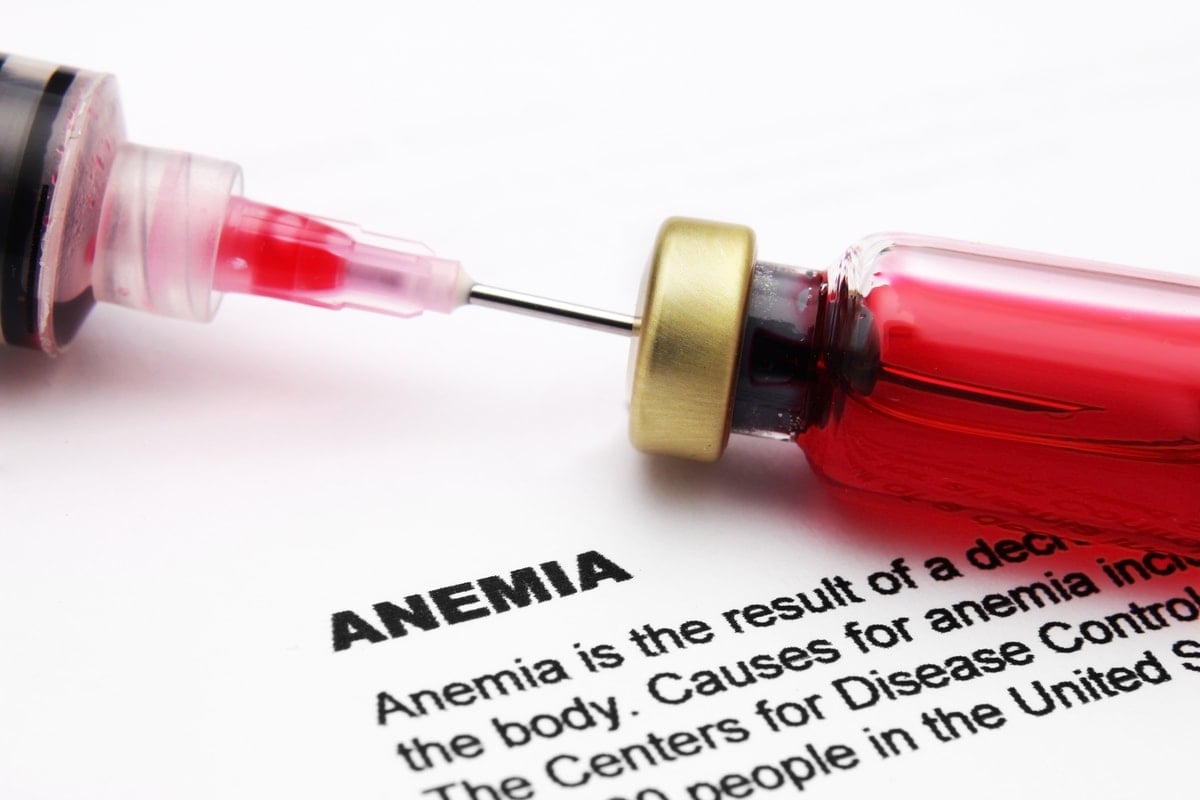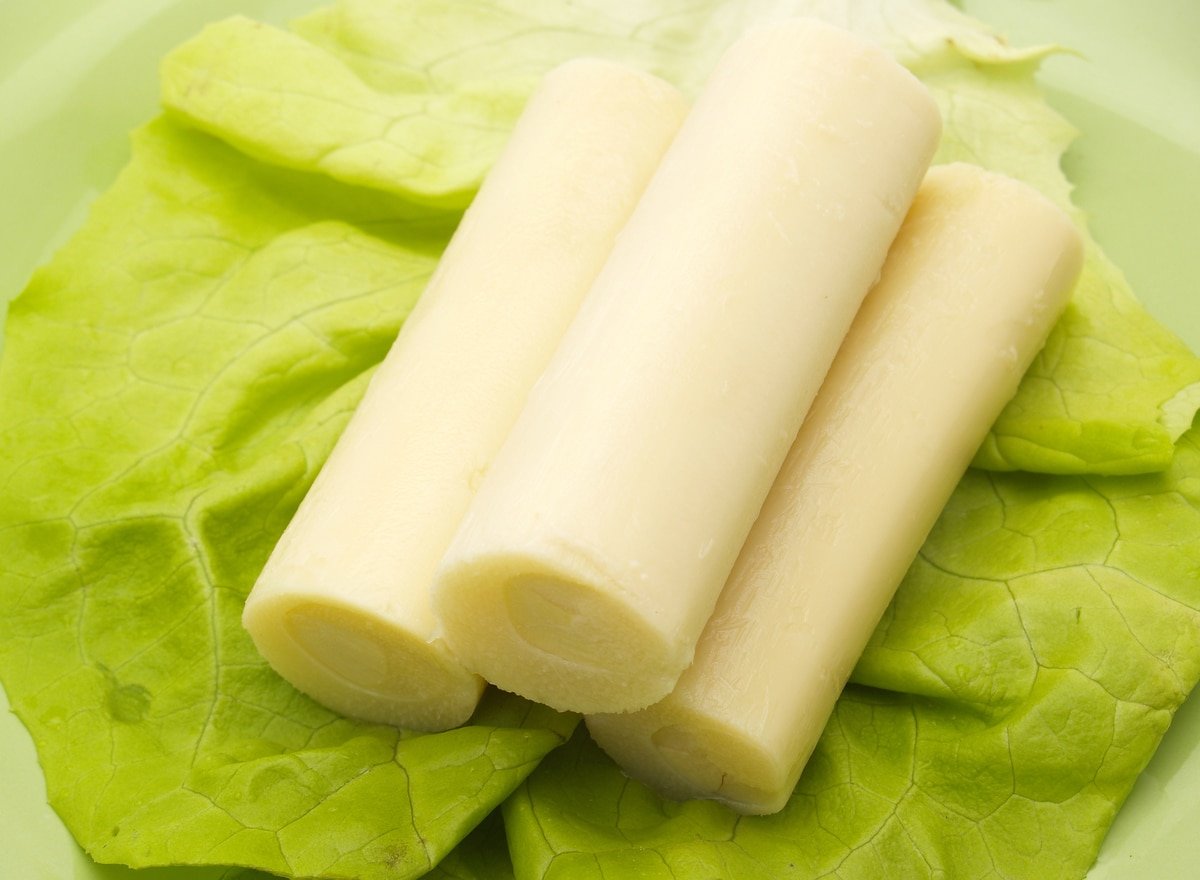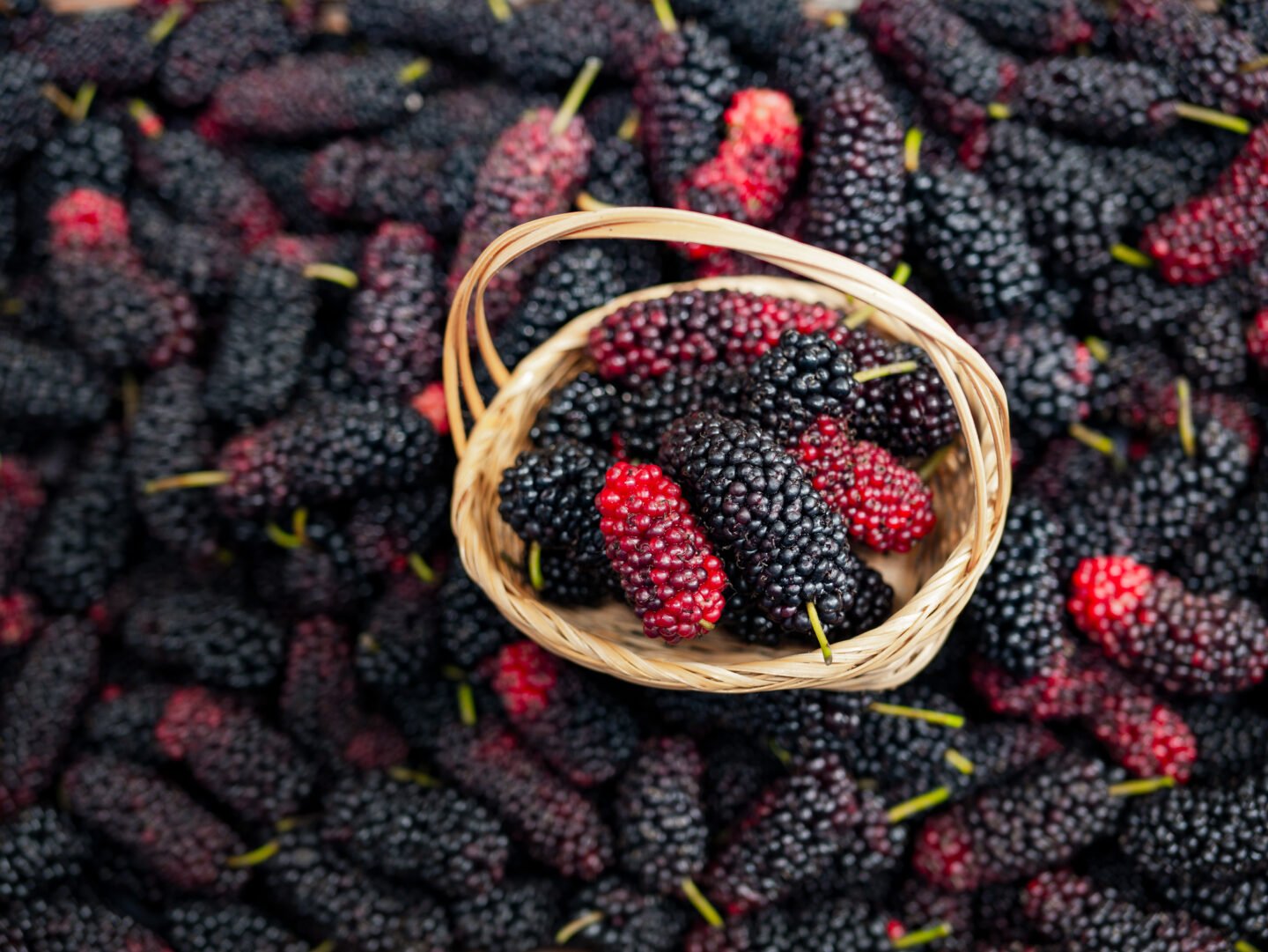
When you first learn that you have iron in your blood, the concept seems kind of bizarre. There's metal inside me? While it's certainly not enough to set off metal detectors, iron is a crucial element for your body. In fact, it's so vital that if you don't have enough natural iron, you could experience some significant side effects.
Fortunately, boosting your iron intake is relatively simple, particularly if you incorporate fresh juice and smoothies into your diet. This article will outline the dangers of iron deficiency and how you can improve your situation with natural ingredients.
Table of Contents
What is an Iron Deficiency?
First, it's important to point out that low iron is not the same as anemia. You can have iron deficiency anemia, which is triggered by insufficient iron, but the two conditions are unique. Because anemia is often caused by low iron, most people conflate the two. However, it's crucial to understand the difference.
Anemia is caused by unhealthy hemoglobin, which is the protein that carries oxygen and iron through your blood. If your hemoglobin isn't working properly, you can experience a wide array of symptoms, including fatigue, dizziness, cold extremities, and more.
That said, iron is an essential ingredient for hemoglobin, so iron deficiency is the most common cause of anemia. There are multiple types of anemia, though, so don't assume that eating more iron will control your symptoms. In many cases, you have to see a doctor to get treatment for anemia, assuming that low iron isn't the trigger.
Causes and Symptoms of an Iron Deficiency

While your diet is a significant source of natural iron, there are a few other reasons why you might have low amounts of the mineral in your body. Some alternative causes can include:
- Heavy menstruation
- Gastrointestinal issues (i.e., celiac disease)
- Continuous blood loss (i.e., from an ulcer or cancer)
- Pregnancy
As you can see, women are far more likely to experience an iron deficiency, particularly when pregnant. So, women should pay closer attention to their diets and make sure to eat iron-rich foods regularly.
We already listed some symptoms of iron deficiency anemia above, but that's not the whole list. Here are some other indicators that you're not getting as much iron as you should:
- Pale skin
- Shortness of breath
- A desire to eat non-food items (i.e., sand, glass, etc.)
- Brittle nails
- Tongue inflammation
Is Iron Deficiency Dangerous?

If left unchecked, it can be. Unless you correct the condition, your blood won't bring as much oxygen to the rest of your body, which can cause secondary problems like fainting or extreme fatigue and weakness. In severe cases, you could die from a lack of iron and healthy hemoglobin.
Thankfully, one of the easiest ways to increase your iron intake is to eat more of the mineral in your diet. Juicing and blending are super convenient, and the process makes it even simpler to boost your hemoglobin count. So, with that in mind, let's dive into the world of juicing and iron.
What is Juicing?
Juicing is the process of taking fresh fruits and vegetables and extracting the liquid from them. Natural juice is full of vitamins and minerals, and it's often much easier to drink these ingredients than it is to eat them.

To juice properly, you'll need an electronic juicing machine. These devices make it much easier to get a higher juice yield. Also, they ensure you don't have to strain your arms as you would with a manual juicer.
Typically, fruits are easier to juice than vegetables because they have more liquid inside. However, some juicers (i.e., masticating models) can work well for fibrous ingredients like leafy greens. If you're serious about juicing, we highly recommend buying a juicer that gives you more flexibility with your food choices.
How Can Juicing Help Boost Your Iron Levels?
Although there are many non-juicing foods with lots of iron, there are plenty of fruits and vegetables that can give your body a boost. Even better, you don't necessarily need to ingest the pulp to get more iron in your diet.
One common issue with juicing is that the process removes a lot of dietary fiber. Fortunately, you can extract most of the iron through juicing, so you don't have to drink thick, pulpy beverages.
Overall, juicing is a highly convenient way to add more vitamins and minerals like iron to your diet. If you're struggling to eat extra fruits and vegetables, you might find this option much easier. Plus, you can benefit from tons of other nutrients like vitamin C, potassium, and antioxidants.
Best Fruits and Vegetables for Boosting Iron
When it comes to iron-rich foods, most people think of red meat, beans, and nuts. While these ingredients do have a lot of iron, they're not well-suited for juicing. Even if you could juice a fat steak, why would you want to? The whole point of cooking a steak is to enjoy eating it.
Thankfully, there are a few fruits and vegetables that can boost your iron levels quickly and easily in a detox juice. Let's break them down.
Leafy Greens

Pound for pound, greens like spinach, chard, and kale have more iron than red meat or chicken. Typically, you won't eat a whole pound of spinach in one sitting, but with juicing, you can get pretty close.
Although most people assume that spinach is the king of iron-rich veggies (after all, it's Popeye's source of strength), the fact is that it's not as potent as once believed. Of course, we're not saying that you shouldn't include spinach, but don't assume that a handful will provide a massive boost. Instead, think of spinach as one component of a larger dietary change.
Tomatoes
Here we have another catch. Tomatoes by themselves are not very iron-rich, as they only contain about 0.5 milligrams per cup. However, if you add some tomato paste, which is far more concentrated, you can see some tangible results. By comparison, a half-cup of tomato paste has almost four milligrams of iron. Plus, it's pretty easy to add a spoonful of paste to your juice or smoothie.
Palm Hearts

If you haven't had palm hearts before, you should start incorporating them into your diet. These vegetables are earthy and somewhat tart, but they add an extra layer of texture and flavor to any dish.
When it comes to juicing, palm hearts can give you a decent yield. Plus, one cup of hearts has 4.6 milligrams of iron, so you're doing your blood a favor as well as your taste buds.
Mulberries
If you're from the U.K., you've probably had mulberries before. In the United States, these berries are far less common, although they are super delicious. We're actually quite fond of mulberry pie, so be sure to try a slice if you ever get the chance.

So, finding fresh mulberries in the U.S. can be challenging, but they're worth the hassle. Not only do mulberries have a good amount of iron (2.6 milligrams per cup), but they're full of vitamin C and antioxidants.
Prunes

Prune juice may make you think of your grandparents, but prunes are a pretty iron-rich food. Plus, if you have any problems using the bathroom, these fruits are excellent at helping you evacuate yourself. Overall, prunes have about three milligrams of iron per cup, along with potassium, vitamin C, and manganese. If you include the pulp, you can get quite a bit of dietary fiber, too.
Beets
If you haven't been paying attention to beets, now is the time to start. Not only is this fruit high in iron (relatively speaking), but beets are more delicious than they get credit for. Beet juice is surprisingly sweet and tangy, making it a valuable addition to any recipe. Plus, beets are pretty juicy, so they're easier to process than other vegetables like spinach.
Seeds
Now, you can't juice seeds, but you can toss a handful of them into your beverage once it's finished. Plus, if you make any iron-boosting smoothies, seeds are an easy addition.

Flaxseeds and sesame seeds are ideal for iron consumption, but you can also get a lot of the minerals from pumpkin seeds. We recommend crushing those seeds with a mortar and pestle before adding them to any drink. Otherwise, your smoothie will be pretty crunchy. Chia seeds and celery seeds are other excellent examples.
Ginger
Having fresh ginger around is always a good idea. This root is beneficial for many reasons, including boosting your iron intake. Although ginger doesn't have much of the mineral itself, it helps your body absorb iron from other sources.
Almonds
As with seeds, you can't juice almonds, but you can add almond milk to a detox juice or smoothie. Almond milk also contains vitamin D, which can help women absorb more iron into their bodies.
Juicing and Heme vs. Non-Heme Iron

When making your juices and smoothies, it's crucial to understand the difference between heme and non-heme iron. Heme iron is found in meats and nuts, and it's much easier to absorb into your body. Non-heme iron comes from fruits and vegetables, and it can get flushed out pretty quickly if you're not careful.
Fortunately, one excellent way to improve non-heme iron absorption is to add vitamin C to the mix. This vitamin works so well because of ascorbic acid. So, putting some orange juice, pineapple juice, or other citrus juice in your beverage can help you get the most nutrients from your ingredients. Also, if you drink iron-rich juice with meat, the two iron types can mix, meaning that your body absorbs more of both.
Best Iron Booster Juice Recipe (and a Smoothie Recipe, Too)
Now that we've seen the benefits of iron-rich foods, let's dive into some sample recipes. Here are two recipes (one juice and one smoothie) that can improve your hemoglobin output.
Green Iron Smoothie
Drinking green juice or a green smoothie is one of the healthiest options. That said, since these mixtures use mostly sugar-free vegetables, they can be hard to get down at first. If you need something sweeter, we recommend adding a spoonful of honey or natural syrup to the recipe.

Over time, your taste buds will adapt to the flavor, meaning that you can reduce your sugar intake until you don't need any at all.
- 2 cups packed spinach
- 1 cup packed kale
- 2 cups chopped watermelon
- 1 banana
- 1 tbsp sesame or flaxseeds
- ½ tbsp molasses or honey
OCB Juice
The OCB in this name stands for Oranges, Carrots, and Beets. Technically, you could call this recipe BOC or COB juice, but that doesn't roll off the tongue as well. All of these ingredients are easy to process, meaning that you should get a pretty high juice yield.

Also, remember that vitamin C helps your body absorb more iron, so make sure to extract as much fresh orange juice as possible. Carrot juice and beet juice also have vitamin C, but not as much. The extra vitamins make this juice recipe doubly beneficial - it's an iron supplement and an immune-boosting juice.
- 1 large beet
- 2 large carrots
- 2 medium oranges
- 1 tbsp seeds
Bottom Line: Drink More Iron
Unless you have a type of anemia not caused by low iron, you can improve your health pretty quickly. Drinking iron-rich fruits and vegetables should alleviate most symptoms, meaning that you can feel better and more invigorated in no time.
That said, if iron-boosting juices and smoothies don't help, you should consult your doctor. In this case, you may have a different form of anemia, which might require specialized treatment.
Sources:
https://ironology.life/blogs/news/you-need-to-know-the-difference
https://www.mayoclinic.org/diseases-conditions/iron-deficiency-anemia/symptoms-causes/syc-20355034
https://www.healthline.com/nutrition/iron-rich-plant-foods#TOC_TITLE_HDR_3

Leave a Reply